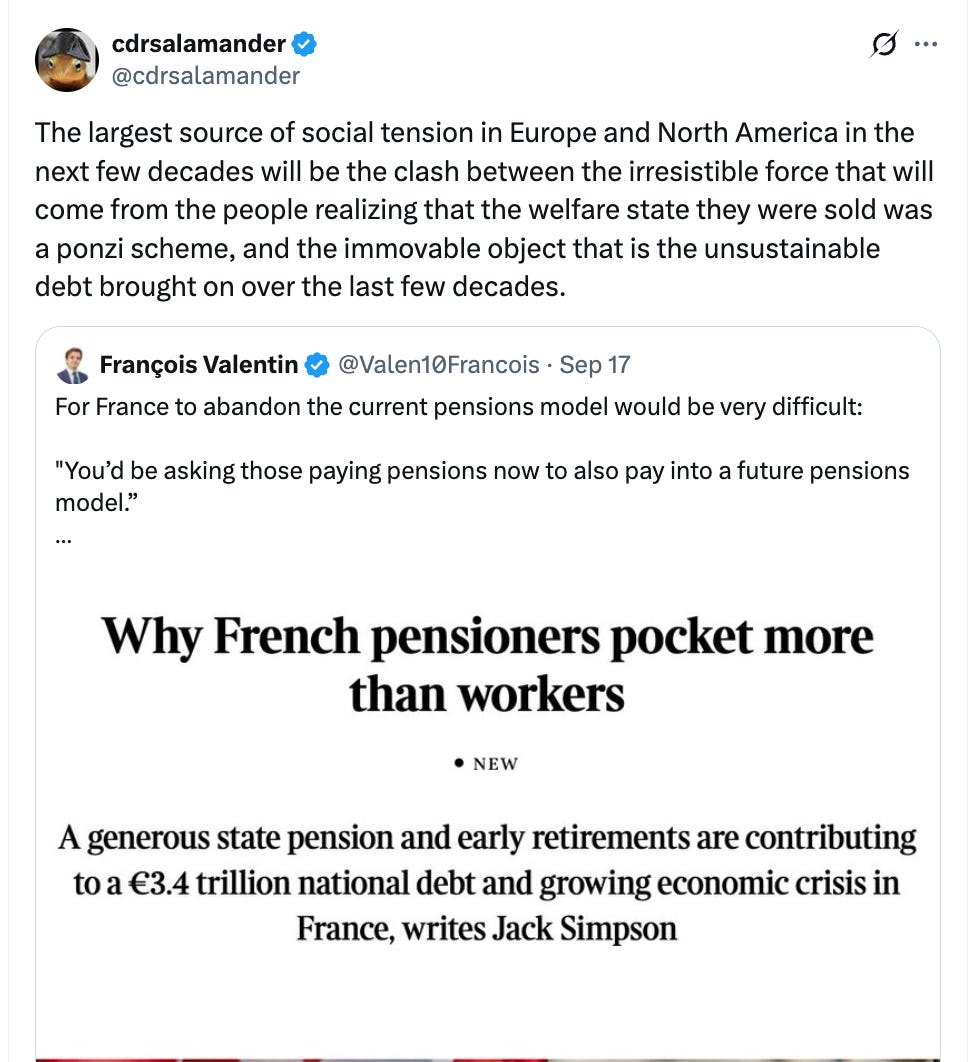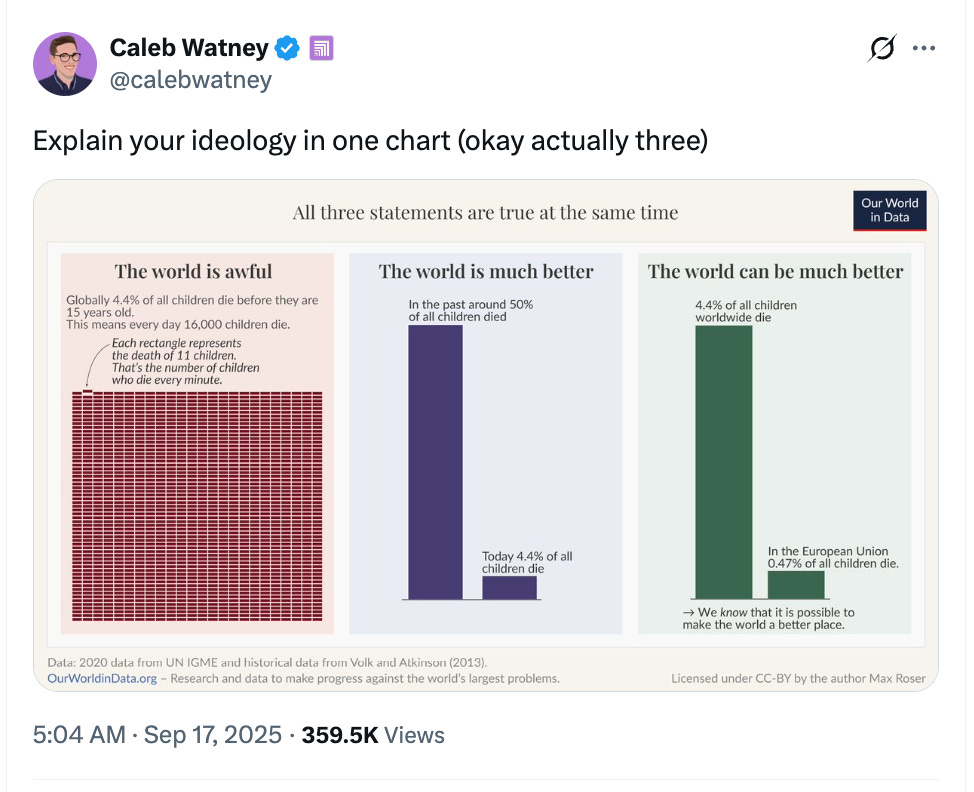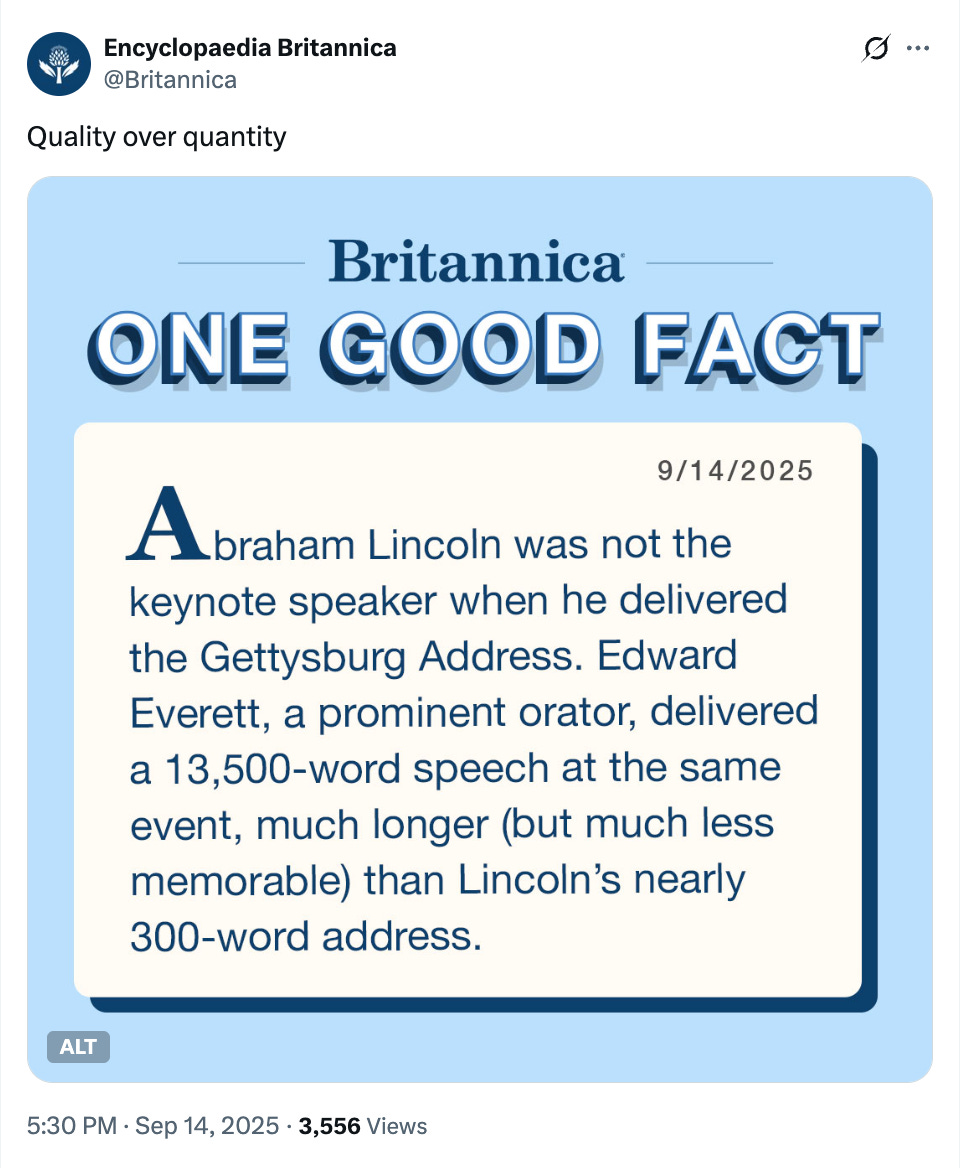Deep Work in the Age of AI
Another lovely review about Story Rules!

Have you picked up the book yet? And if so, read it? Aaaand if so, written a review on Amazon? 🙂
Thanks for reading The Story Rules Newsletter! Subscribe for free to receive new posts and support my work.
And now, on to the newsletter.
Welcome to the one hundred and thirty-fourth edition of ‘3-2-1 by Story Rules‘.
A newsletter recommending good examples of storytelling across:
- 3 tweets
- 2 articles, and
- 1 long-form content piece
Let’s dive in.
𝕏 3 Tweets of the week

This would have deep repercussions for decades.

Superb example of how the same information can be framed in different ways.

Less can be more.
📄 2 Articles of the week
a. Scott Galloway on the Charlie Kirk assassination
This is a CNN Interview featuring Prof. Scott Galloway following the assassination of Charlie Kirk. He makes some powerful points in his responses.
He uses the rule of 3 when responding to the host’s question about the reason for these kinds of incidents:
- The stock market is being driven by a few internet-based companies – who are selling rage
- Young men who have a lack of opportunity, are sequestering from society and relationships… and are being preyed upon by the social media and gaming giants
- The easy availability of guns
He offers clear solutions:
- Make social media and AI companies responsible for the actions caused by their tools
- Ban phones in schools, and disallow use before the age of 16
The way Galloway articulates his sentences is something to learn from!
b. Nancy Duarte on handling questions during a presentation
Some useful ideas here by Duarte. She describes the situation that many of us would have experienced:
Someone interrupts your carefully prepared presentation with “But what about…?” and raises a point you never considered. Everyone is looking at you, and you feel the weight of the world on your shoulders.
She then shares a 3-part ‘RAP’ framework to tackle it:
Here’s a quick overview of my “RAP” formula that you can use in these moments to turn blindside objections into “aha” moments.
1. R: Recognize the type of resistance you’re facing:
– Logical resistance (conflicting data or reasoning)
– Emotional resistance (values or identity challenges)
– Practical resistance (implementation concerns)
I liked the simple split of logical, emotional, and practical issues. She also shares ideas on how to manage them:
2. A: Address it proactively in your presentation:
– For logical resistance: Acknowledge competing viewpoints before they’re raised. “Some might point to last quarter’s numbers as evidence against this approach. Here’s why that perspective is incomplete…”
– For emotional resistance: Connect your idea to their existing values. “This initiative actually strengthens our commitment to customer-first thinking by…”
– For practical resistance: Demonstrate you’ve considered the real-world constraints. “I know this requires significant change. Here’s our phased implementation plan that accounts for…”
The rest of the post is about the next steps.
🎧 1 long-form listen of the week
Well-known author Cal Newport, who wrote ‘Deep Work’, has this thought-provoking conversation with Derek Thompson on the impact of AI on reading and writing.
Thomson starts with a startling statistic about the spending on AI.
Spending on artificial intelligence added more to the US economy last quarter than consumer spending. That means the only reason this economy is growing right now is because of the boom in artificial intelligence spending on advanced ships, data centers, and energy.
AI is driving the economy and the stock markets:
If, for example, you want to know why is GDP growing rather than stalling, the answer is AI. If you want to know why the stock market is soaring rather than stalling, here again, the answer is AI. According to Michael Sembalist at JP Morgan, nearly two-thirds of stock market returns in the last two years have come from a small number of AI-related stocks, like Microsoft and Amazon and Meta.
They then move to how AI is impacting education, and Thompson quotes some studies that talk about how college students are neither reading nor writing on their own:
… many professors at elite colleges now say that their students have never in their life read a full book.
All they’ve read in high school is just little snippets of books to prepare for the PSAT and SAT. We are losing now, even at the highest levels of education, the ability to sit with a piece of text, read it, and make connections within it. Soon after we did this episode, New York Magazine published a viral cover story on the epidemic of cheating in college.
This was a long piece with a very short TLDR. Practically every student in college, and I would assume high school, is using ChatGPT to write all of their essays. And also practically nobody, the teachers, professors, know quite what to do about this.
To tackle this, Thompson has an intriguing idea – can we get students to present their findings orally:
My wife just finished her PhD in clinical psychology, and I love the fact that the last verb of PhD is, you defend your dissertation. You don’t write your dissertation, you defend it. It made me think, should we turn more of college into a defense?
What’s ChatGPT-able is writing an essay about the Habsburg Empire. What’s not ChatGPT-able is defending your essay about the Habsburg Empire in front of your History 105 class on Ancient European Warfare. I wondered if turning college into something that was more stand up, more presentational, more, not only are you graded for defending your paper, I’m also going to hand out grades or incorporate the variable of how good are your questions of the person presenting at the front of the class.
Newport makes the point that reading + writing is the superpower that makes us intelligent. We should be wary if AI takes that skill away:
…reading-writing literally changes our brain. It’s like the serum we have to take in a superhero comic book to gain the superpower. I had been ringing this alarm bell probably all the way back to my book, Deep Work, that it’s something that we have to keep taking the serum for.
We have to work on our brains to have this arbitrary, constructed, culturally-constructed type of brain that we need to thrive in today’s world, and that we should be super wary when stuff takes that proverbial serum away.
That’s all from this week’s edition.
Photo by Diana Polekhina on Unsplash








